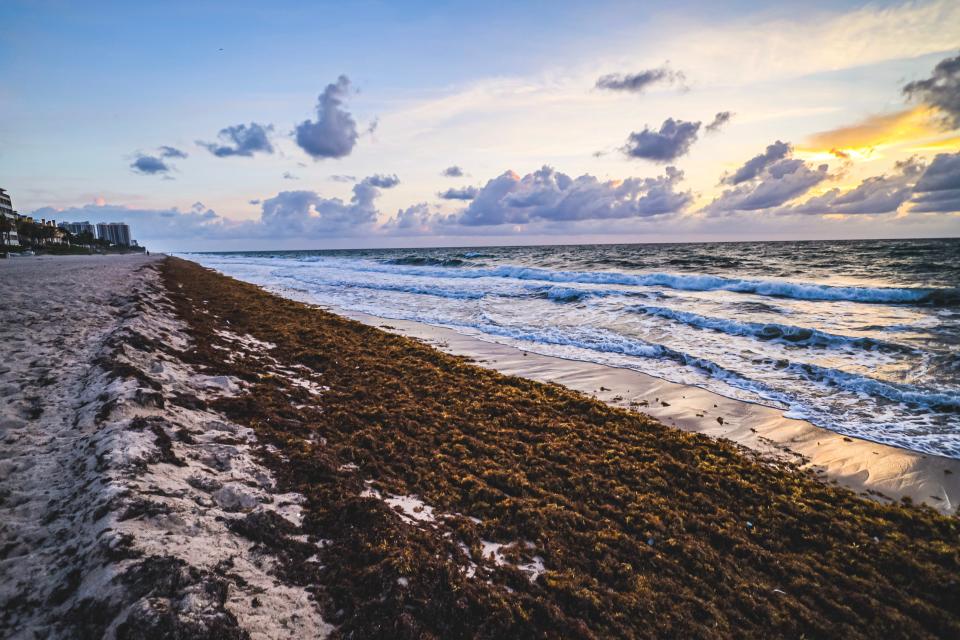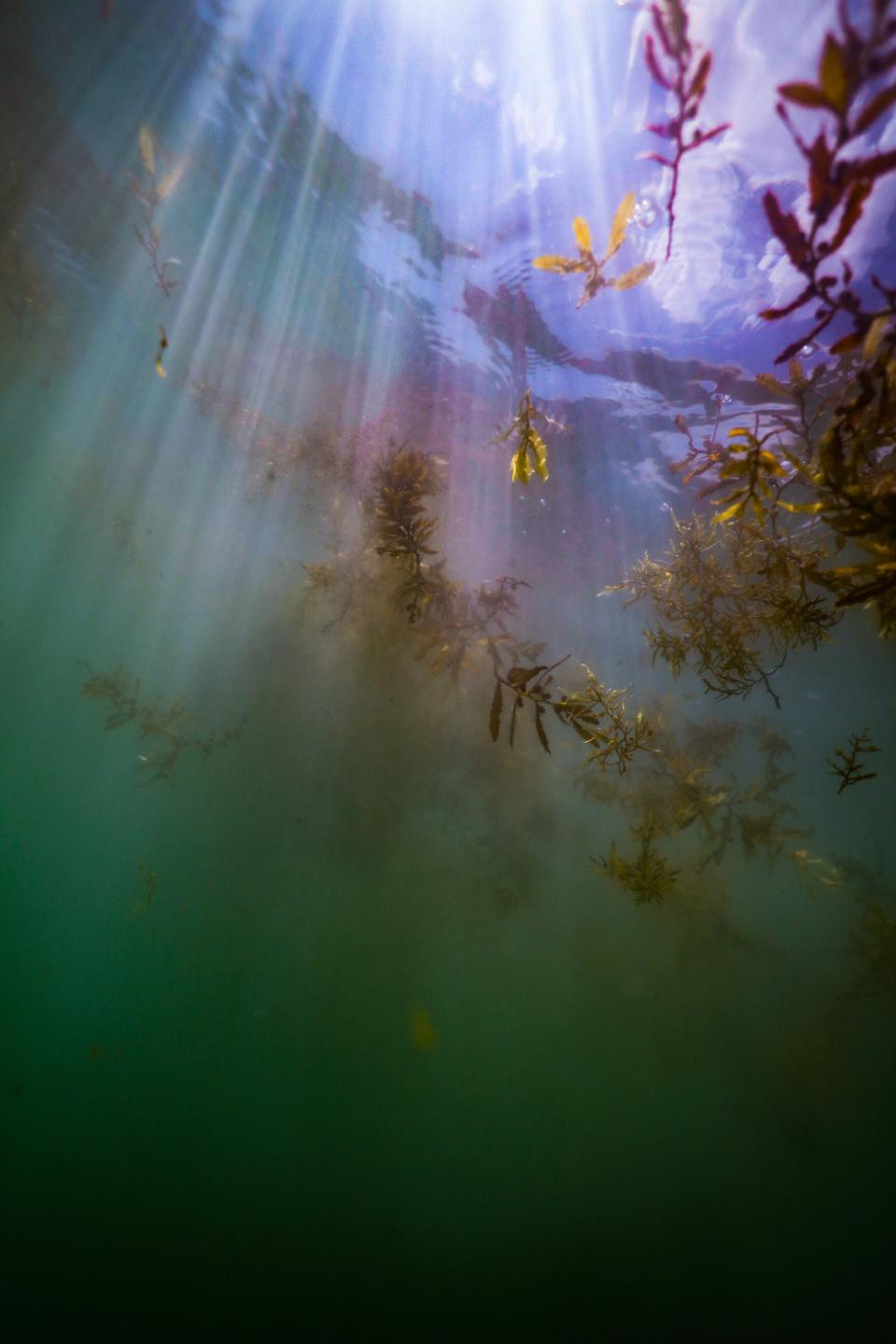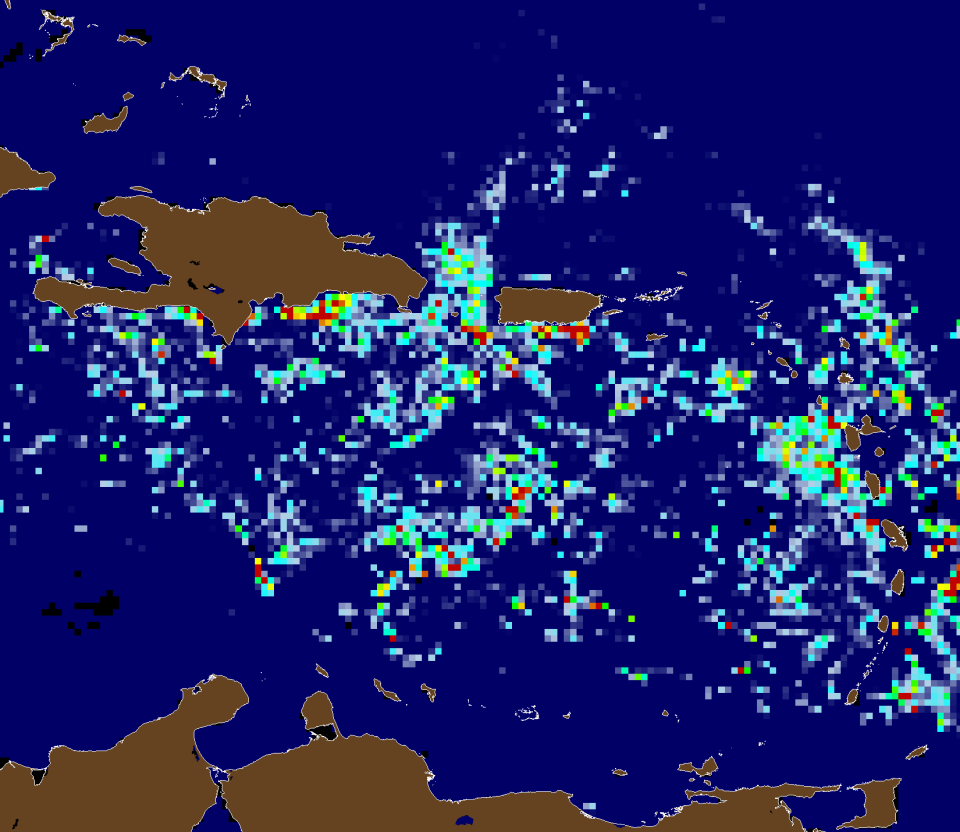Piles of smelly seaweed are arriving on Florida beaches: How bad will it get?
Waves filled with sargassum continue washing up on beaches in the Caribbean Sea and southern Florida and the stacks of seaweed are expected to get worse in the weeks ahead.
A record abundance of the seaweed was seen on satellite images in the Caribbean in April, the University of South Florida's Optical Oceanography Lab said in a monthly update released this week.
The seaweed set a record in the Great Atlantic Sargassum Belt in March, but the university said the overall quantity in the belt − which stretches from west Africa to the Gulf of Mexico − remained roughly the same in April, probably because of persistent clouds.
Sargassum drifts westward in the Atlantic with prevailing winds and currents, floating in the water into the Caribbean and Gulf of Mexico. Since 2011, the sargassum has reached epic proportions each summer, fluctuating from year to year and place to place.

Sargassum likely to worsen
The total quantity of the floating masses of seaweed is "expected to increase over the next few months, withimpacts of beaching events in the (Caribbean) and (Gulf) worsening accordingly," the University reported.
In March, the University's researchers said it's likely this year's sargassum bloom will be the largest ever recorded, with major impacts in the months ahead. Typically the blooms peak in June or July.
In April, concentrations of sargassum in the Gulf of Mexico, where the mats float with the loop current, were comparable to those seen in April during other major bloom years.
An estimated 3 million tons was seen in the Caribbean in April, with buildups along the southern coasts of Hispaniola, Jamaica and Puerto Rico, the University said. The sargassum east of the Antilles islands and in the Caribbean is expected to continue to accumulate and move westward, while abundance in the Gulf of Mexico "will likely increase substantially."

Can experts predict when the sargassum will arrive in the US?
It's difficult to predict exact timing and location for arrival at individual beaches, the University said, although efforts are underway to improve computer models that could be used for such forecasts.
While the macroalgae can pile up in large quantities along beaches, when it's floating along the 5,000 mile sargassum belt, the density varies but is considered "rather low," researchers said.

Saltwater fisherman Marco Friedman told the Daytona Beach News-Journal in late April that the seaweed had begun to show up in the surf. “It makes it almost impossible to fish," Friedman said.
Although sargassum can be a good thing in the open ocean, providing habitat for fish, turtles and many other creatures, there can be too much of a good thing. Piles of the seagrass on the beach smell bad and can be labor-intensive and costly to remove.
In Florida or visiting? Check beach webcams for sargassum.
Contributing: Ken Willis, Daytona Beach News-Journal, contributed to this report.
This article originally appeared on USA TODAY: Sargassum seaweed washing up in Florida, Caribbean and Gulf of Mexico

